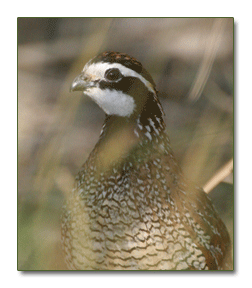
About Us

The Richard M. Kleberg, Jr. Center for Quail Research was created in January of 2000 with a generous donation from the Caesar Kleberg Foundation for Wildlife Conservation. The result has been the creation of a foundational canvas for the Institute’s artisans of quail research. The donation secured through this endowment will provide the resources for which Institute researchers can draw upon for current and future projects dedicated to conservation and management of quail populations in south Texas.
The roots of quail research at the Institute lie with the seminal natural history work of Valgene “Val” W. Lehmann. Although Lehmann’s work was conducted prior to the emergence of the Institute, it is impossible to ignore the importance of the conceptual and scientific foundations Lehmann developed in the course of the forty years of field observations that ultimately became the book “Bobwhites in the Rio Grande Plain of Texas.”
From the mid-1980s until the late 1990s, quail research conducted at the Institute was dominated by Dr. Fred S. Guthery and a group of students and associates who clearly established that the pendulum of quail research, productivity, and creativity swung from the southeastern states to Texas and the southern midwest where it remains today.
Today, the Richard M. Kleberg, Jr. Center for Quail Research provides the umbrella for all quail-related research at the Institute. Two major research programs currently represent a majority of the quail research conducted: the South Texas Quail Research Project and the Quail Associates Research Program.
Our Facilities
South Texas provides a rich field laboratory for investigating a wide array of research questions and initiatives related to quail habitat and population ecology. Long-term investigations on population and habitat relationships are conducted at the San Tomas Hunting Camp in the Encino Division of King Ranch. A network of over twenty other ranches provide data on quail age ratios, weights, and hunting success as part of the Quail Associates Program.
We also have access to a state-of-the art aviary for captive research and a new core molecular genetics laboratory.
